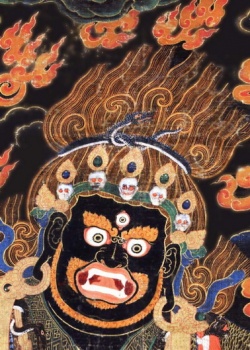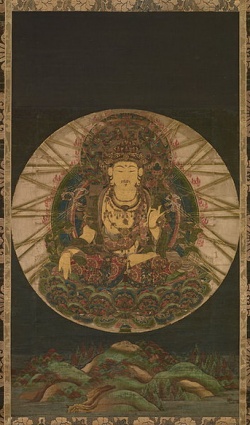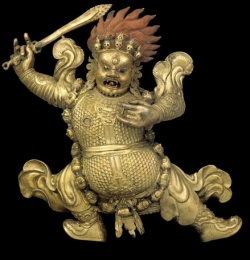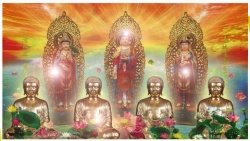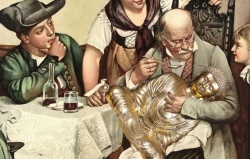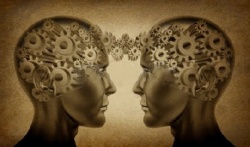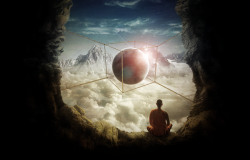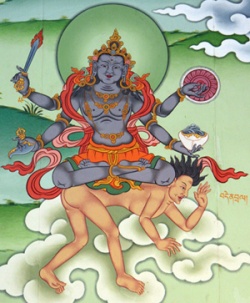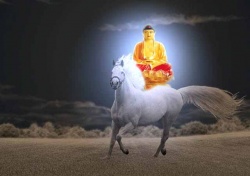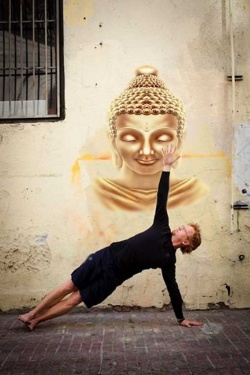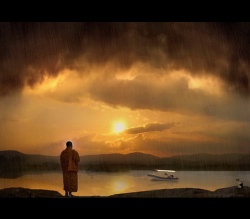Difference between revisions of "Tantric Deities"
(Created page with " <poem> Mahakala, Yamantaka, Hayagriva, Hevajra These tantric deities, a.k.a. Dharma protectors or dharmapalas, occupied significant positions in...") |
|||
| (11 intermediate revisions by 2 users not shown) | |||
| Line 1: | Line 1: | ||
| + | [[File:19 d8.jpg|thumb|250px|]][[File:Akasagarbha.jpg|thumb|250px|]][[File:Begtse Chen090 n.jpg|thumb|250px|]]<nomobile>{{DisplayImages|4013|3927|695|3881|955|4213|1446|3645|1837|1290}}</nomobile> | ||
| + | |||
| + | |||
| + | |||
| + | |||
| + | |||
| + | |||
| + | ==[[Mahakala]], [[Yamantaka]], [[Hayagriva]], [[Hevajra]]== | ||
| + | |||
| + | |||
| + | These [[tantric deities]], a.k.a. [[Dharma protectors]] or [[dharmapalas]], occupied significant positions in the exchange of [[Buddhism]] between [[lamas]] and {{Wiki|political}} rulers. | ||
| + | |||
| + | Various rulers identified themselves with or were identified as [[emanations]] of [[Yamantaka]] and [[Mahakala]] and [[Hevajra]] and [[Hayagriva]]. | ||
| + | |||
| + | This identification stood to enhance their [[extraordinary]] {{Wiki|status}} and strengthen their legitimacy to {{Wiki|rule}} from a [[Buddhist]] {{Wiki|perspective}}. | ||
| + | |||
| + | If the rulers identified with the [[deity]] personally, the association must also have supported their [[sense]] of entitlement to {{Wiki|rule}} and served as a source of [[confidence]] and [[courage]]. | ||
| + | |||
| + | Since [[ritual initiation]] is a crucial [[element]] in the process of developing an effective [[connection]] with [[deities]], the role of the [[lama]] is indispensable to the [[practitioner]], in this case the [[ruler]], who wants to create an affiliation with a [[tantric deity]]. | ||
| + | |||
| + | Without the [[lama’s]] guidance, [[blessing]], and [[ritual]] introduction, the [[connection]] will not be [[Wikipedia:Authenticity|authentic]] or effective by [[Buddhist]] reckoning. | ||
| + | |||
| + | [[Initiation]] is a necessity when working with [[peaceful deities]] as well, but it is particularly important with [[wrathful deities]], since the stakes (often expressed in terms of [[rapid enlightenment]] or [[rebirth]] in [[hell]]) are so high. | ||
| + | |||
| + | |||
| + | |||
| + | [[Ritual]] association with [[wrathful deities]] is considered as [[dangerous]] as it is powerful. | ||
| + | |||
| + | |||
| + | |||
| + | In [[Tibetan]] style [[Buddhism]], [[wrathful deities]] and [[protectors]] are particularly potent {{Wiki|representations}} of power and might, [[conceived]] of as terrific forces that conquer the “enemies” of [[mental]] and [[emotional]] [[afflictions]] while watching over the [[Dharma]] and its practitioners. | ||
| + | |||
| + | [[Wrathful deities]] [[exist]] in a {{Wiki|hierarchy}} of varying capacities. | ||
| + | |||
| + | Some are fully [[enlightened beings]] who pair the [[unlimited]] capacity of a [[Buddha]] with the [[extraordinary]] strength of negativity and {{Wiki|violence}} which they harness and redirect towards benefiting [[ignorant]] [[beings]]. | ||
| + | |||
| + | These [[enlightened deities]] are inextricably enmeshed with pacific [[deities]] who work with the positive aspects of a [[Buddha’s]] power, namely [[wisdom]] and [[compassion]]. | ||
| + | |||
| + | Depending on the particular situation, the [[wrathful]] or pacific aspect of an [[enlightened being]] might be more appropriate to call upon for [[protection]], inspiration, and assistance. | ||
| + | |||
| + | Other similar looking [[protectors]] are not [[enlightened]] and [[exist]] at lower echelons on the scale of [[wrathful]] capacity. | ||
| + | |||
| + | These [[protectors]] need to be propitiated and dealt with carefully since their power is not tempered by full [[enlightenment]]. | ||
| + | |||
| + | In any case, as part of the [[Buddhist pantheon]] they generally act for the [[benefit]] and safeguarding of the [[Buddhist Dharma]] and can be called upon to banish menaces of the [[mind]] and the external [[world]] alike. | ||
| + | |||
| + | |||
| + | |||
| + | It is common for practitioners to identify directly with [[Buddhas]] and [[bodhisattvas]] through [[visualizations]] that merge the [[mundane]] [[person]] with the [[enlightened being]]. | ||
| + | |||
| + | These [[sadhana]] practices are a mainstay of [[Tibetan Buddhism]]. | ||
| + | |||
| + | Anyone who has the necessary relationship with a qualified [[lama]] can identify with a [[tantric deity]], in this context called a [[yidam]], within the [[ritual]] [[boundaries]] of the [[sadhana practice]]. | ||
| + | |||
| + | Once the practice session is completed, the [[person]] returns to his or her [[mundane]] [[Wikipedia:Identity (social science)|identity]], hopefully somewhat more similar to a [[Buddha]] than he or she was before the practice. | ||
| + | |||
| + | The pervasiveness of this type of practice helps explain the context in which [[Mi-nyag]], {{Wiki|Mongolian}}, or {{Wiki|Manchu}} rulers would have come to be identified with [[tantric deities]]. | ||
| + | |||
| + | Although in their cases the association went far beyond the link between a usual [[practitioner]] and a [[yidam]], since the claim seems to have been that the [[ruler]] was actually [[identical]] to the [[deity]]. | ||
| + | |||
| + | The {{Wiki|structure}} of [[sadhanas]] practice also highlights the importance of a qualified [[lama]] in facilitating the identification. | ||
| + | |||
| + | Many of the rulers who adopted [[Tibetan]] style [[Buddhism]] took advantage of the [[extraordinary]] resource the [[sadhana tradition]] [[offered]] in [[relation]] to bolster their position of power by directly identifying with omnipotent, [[omniscient]] figures. | ||
| + | |||
| + | |||
| + | |||
| + | [[Mahakala]] (the [[Great Black one]]) is the [[wrathful manifestation of Avalokiteshvara]], the [[bodhisattva of compassion]]. a particularly potent and {{Wiki|pervasive}} presence in the [[wrathful]] [[sphere]] and is popular in all the sects of [[Tibetan Buddhism]]. | ||
| + | |||
| + | He is depicted in over seventy [[forms]] of varying colors and with various implements. | ||
| + | |||
| + | His most common [[form]] is a blue-black with four faces and four arms. Each arm performs one of the following [[actions]]: limiting [[sickness]] and troubles, increasing [[life]] and [[wisdom]], attracting [[people]] to the [[Dharma]], and destroying [[ignorance]]. | ||
| + | |||
| + | He carries a [[skull cup]], a hooked knife, a sword and a [[trident]]. | ||
| + | |||
| + | [[Rites]] connected to [[Mahakala]] and [[Hevajra]] (see below) became regular [[elements]] in the enthronement of [[Yuan]] [[emperors]] and [[Mahakala]] was the [[national protector of the Mongols]] until very recently. | ||
| + | |||
| + | Key {{Wiki|military}} conquests and the occasional by-passing of armed {{Wiki|violence}} were attributed to the aid [[Mahakala]] provided the {{Wiki|Mongol}} forces. | ||
| + | |||
| + | |||
| + | |||
| + | [[Yamantaka]] ([[Slayer of Death]]) is the [[wrathful form of Manjushri]], the [[bodhisattva of wisdom]]. | ||
| + | |||
| + | One of his most common [[forms]] is [[Vajrabhairava]] ([[Adamantine Terrifier]]), who played an especially important role in legitimizing rulers of the [[Yuan]]. | ||
| + | |||
| + | This [[deity]] is usually blue-black in {{Wiki|color}}, surrounded by flames, with [[nine heads]]. | ||
| + | |||
| + | His main head is always that of a {{Wiki|buffalo}}, and he usually has thirty-four arms, all holding different [[weapons]] and [[ritually]] potent implements. | ||
| + | |||
| + | He has sixteen {{Wiki|legs}}, which trample an array of [[animals]] that represent enemies of the [[Dharma]]. He is especially important to the [[Gelukpa sect]]. | ||
| + | |||
| + | [[Initiation]] into [[Yamantaka]] practices were highly sought after in the [[Yuan]], as demonstrated by the mention of the practice in the {{Wiki|biography}} of [[Shalopa]], who was trained in the practices and therefore highly esteemed among prominent {{Wiki|Mongols}}. | ||
| + | |||
| + | |||
| + | |||
| + | [[Hayagriva]] is another [[wrathful manifestation of Avalokiteshvara]]. | ||
| + | |||
| + | He is typically [[red]], with a horse-head [[emerging]] from the {{Wiki|crown}} of his head. He usually has six arms, which hold various [[weapons]] and implements useful for [[overcoming]] [[afflictions]] and cutting through [[ignorance]]. | ||
| + | |||
| + | |||
| + | |||
| + | [[Hevajra]] is especially important to the [[Sakya sect]] although he appears in the practices of other sects as well. Closely associated with [[Mahakala]], [[Hevajra]] is the [[wrathful emanation of Akshobya]]. | ||
| + | |||
| + | As with the [[dharmapalas]] described above, he has several common [[forms]], with varying numbers of limbs, heads, attendants, and implements. | ||
| + | |||
| + | His role as a [[yidam deity]] is [[traditionally]] traced back to the [[Buddhist king]] of [[Uddiyana]], [[Indrabhuti]]. | ||
| + | |||
| + | This might help explain why he was appropriate as the [[yidam deity]] of {{Wiki|Mongol}} [[emperors]], starting with [[Kubilai]], who is recorded to have undergone the [[consecration]] associated with [[Hevajra]] in 1253. | ||
| + | |||
| + | There are several prominent accounts of ‘[[Phags-pa]] having conferred the [[Hevajra initiation]] on powerful {{Wiki|Mongols}}, thus gaining their favor and support. | ||
<poem> | <poem> | ||
| − | [[ | + | Sources: |
| + | |||
| + | [[Herbert Franke]]. 1978. From tribal chieftain to [[universal]] [[emperor]] and [[god]]: the legitimation of the [[Yuan dynasty]]. [[Munchen]]: Verlag der Bayerischen Akademie der Wissenschaften. | ||
| + | |||
| + | [[Herbert Franke]]. [[Sha-lo-pa]] (1259-1314), A [[Tangut]] [[Buddhist Monk]] in [[Yuan]] [[China]]. | ||
| + | [[Herbert Franke]]. [[Tan-pa]], A [[Tibetan]] [[Lama]] at the Court of the Khans | ||
| + | |||
| + | {{Wiki|Elliot Sperling}}. Some Remarks on [[Sga a-gnyan Dam-pa]] and the Origins of the [[Hor-pa Lineage]] of the [[Dkar-mdzes]] Region. | ||
| + | [[Vessantara]]. 1993. Meeting the [[Buddhas]]: A Guide to [[Buddhas]], [[Bodhisattvas]], and [[Tantric Deities]]. [[Glasgow]]: [[Windhorse Publications]]. | ||
| + | |||
| + | |||
| + | |||
| + | [[Chakrasamvara]] and [[Vajravarahi]] | ||
| + | |||
| + | |||
| + | [[Shamvara]] has four faces and twelve arms. His first two arms are wrapped in [[passionate]] embrace around his [[consort]], [[Vajravarahi]]. The first two hands, holding a [[vajra]] scepter and a [[bell]], make the [[diamond]] HUM-sound gesture. | ||
| + | |||
| + | |||
| + | Several [[forms]] of [[Samvara]] are known. The [[Sadhanamala]], a 12th-century manual of [[iconography]], identifies this [[form]] as [[Chakrasamvara]]. | ||
| + | |||
| + | In [[Tibet]], [[Chakrasamvara]] is a [[deity]] particularly associated with the [[Kagyu Order]], although he is important to the [[Geluk]] and [[Sakya]] as well. | ||
| + | |||
| + | |||
| + | The [[name]] [[Shamvara]], or [[Shambara]], itself means [[Supreme Bliss]], the [[bliss]] that is the [[fruit of tantric meditation]]. | ||
| + | |||
| + | Similarly, [[Chakrasamvara]], literally, "]]joined to the [[Wheel]]]]," may be interpreted as "[[joined to the whee] of wisdom and bliss]]." | ||
| − | + | {{Wiki|Equal}} to a [[Buddha]], [[Samvara]] is beyond the extremes of [[samsara and nirvana]]. | |
| − | + | To signal this, his right foot presses down on the [[goddess]] called [[Night of Time]], [[Kalaratri]], who represents [[nirvana]]. His left foot rests on {{Wiki|Bhairava}}, The [[Terrifier]], who represents [[samsara]]. | |
| − | |||
| − | |||
| − | [[ | + | [[Shamvara's]] [[hair]] is arranged in the coif of a [[yogi]] and is decorated with a [[lunar]] crescent, a reminder that he was first [[worshipped]] by the wandering [[ascetics]] of {{Wiki|medieval}} [[India]], and that although he is a thoroughly [[Buddhist deity]], he shares some [[attributes]] with [[Shiva]], the [[Hindu god]] of [[yogis]]. |
| − | |||
| − | [[ | + | His [[name]], for example, is related to [[Shamba]] ([[Fortunate]]), an [[epithet of Shiva]]. In [[Buddhist]] [[myth]], [[Shamvara]] dwells atop [[Mount Meru]] -- [[Mount Kailash]] -- the [[traditional abode of Shiva]]. |
| − | + | [[Shamvara]] is a [[deity]] of the [[yidam]] class, which are [[personal deities]] of [[Buddhist meditation]]. | |
| + | |||
| + | A [[yidam]] is at once the [[embodiment]] of a [[philosophical view]] and a role model, for the [[meditator]], of the [[Buddha]] he aspires to become. | ||
| + | |||
| + | |||
| + | A [[yidam]] is a "[[pure appearance]]," a [[vision of purity]]. [[Tibetans]] say that rather than having an ordinary [[physical form]], such a [[deity]] is a congerie of [[pure]] [[symbolic]] [[elements]]. | ||
| + | |||
| + | The [[bell]] that [[Shamvara]] holds in his left hand, for example, [[symbolizes]] [[wisdom]], and the [[vajra]] scepter that he wields in his right represents [[skillful method]]. | ||
| + | |||
| + | In the poetical [[language]] of [[tantra]], the [[god's]] [[bell]] is [[wisdom]] itself. | ||
| + | |||
| + | Thus, the [[deity's]] [[attributes]] are of paramount importance: they are clues to his [[Wikipedia:Identity (social science)|identity]] and to his function in [[meditation]] and [[ritual]] (translation from Snellgrove, 1987, p. 154): | ||
| + | |||
| + | |||
| + | |||
| + | His [[body]] is blue, indicating that he does not diverge from the ([[celestial]]) [[Dharma-sphere]]. | ||
| + | |||
| + | Each face has three [[eyes]], indicating that he sees the (whole) [[threefold world]] and that he [[knows]] the [[substance]] of the three times ({{Wiki|past}}, {{Wiki|present}} and {{Wiki|future}}). | ||
| + | |||
| + | He has twelve arms indicating that he comprehends the [[evolution]] and reversal of the twelvefold causal {{Wiki|nexus}} and eliminates these twelve stages of [[transmigration]]. | ||
| + | |||
| + | |||
| + | [[Corresponding]] to the usual [[iconography]] of [[Chakrasamvara]], this piece has twelve arms, each of which once held a [[characteristic]] implement. Some of these, however, were cast separately and are now missing. | ||
| + | |||
| + | |||
| + | The [[tantric text]] called Clarifying the Order of the [[Rite]] ([[sadhana]]) of the Circle of the [[Mandala]] of Sricakrasamvra, quoted above (translated by [[Dawn Samdup]] in [[Arthur Avalon]], [[Tantric]] Texts, VII, as cited in [[Snellgrove]], 1987, p. 154), explains the meaning of each implement. The first pair of hands holds, right and left, a [[vajra]] scepter and a [[bell]], [[symbolizing]] the union of [[skillful means]] and [[wisdom]]. The second pair rends the [[elephant]] of [[illusion]] and stretches its hide out like a cape. | ||
| + | |||
| + | |||
| + | |||
| + | The [[drum]] in the third right hand (missing) shows that [[Samvara's]] "{{Wiki|voice}} resounds joyously." The third left hand holds the [[khatvanga staff]] that represents "the [[blissful Thought of Enlightenment]]." | ||
| + | |||
| + | His fourth right hand brandishes the ax (missing) that "cuts off [[birth]] and [[death]] at the [[roots]]." | ||
| + | |||
| + | The [[skull bowl]] of {{Wiki|blood}} in his fourth left hand shows that he "has cut away {{Wiki|discrimination}} between [[existence]] and [[Wikipedia:Existence|nonexistence]]." | ||
| + | |||
| + | His fifth right hand wields the [[vajra]] [[chopper]] that "cuts off the six defects, [[pride]] and the rest." | ||
| − | + | The [[vajra lasso]] in his fifth left hand binds [[beings]] to [[wisdom]] from [[life]] to [[life]]. The [[trident]] (missing) in his sixth right hand signals that he has "overcome the [[evil]] of the [[threefold world]]." | |
| − | |||
| − | |||
| − | |||
| − | |||
| + | The [[severed head]] of the [[god]] [[Brahma]] dangles from his sixth left hand, showing that [[Samvara]] "avoids all [[illusion]]." | ||
| − | |||
</poem> | </poem> | ||
{{R}} | {{R}} | ||
[https://lamas-and-emperors.wikischolars.columbia.edu/Tantric+Deities lamas-and-emperors.wikischolars.columbia.edu] | [https://lamas-and-emperors.wikischolars.columbia.edu/Tantric+Deities lamas-and-emperors.wikischolars.columbia.edu] | ||
[[Category:Deities]] | [[Category:Deities]] | ||
| + | [[Category:Wrathful deities]][[Category:Tantric Deities]] | ||
Latest revision as of 10:41, 22 January 2024
Mahakala, Yamantaka, Hayagriva, Hevajra
These tantric deities, a.k.a. Dharma protectors or dharmapalas, occupied significant positions in the exchange of Buddhism between lamas and political rulers.
Various rulers identified themselves with or were identified as emanations of Yamantaka and Mahakala and Hevajra and Hayagriva.
This identification stood to enhance their extraordinary status and strengthen their legitimacy to rule from a Buddhist perspective.
If the rulers identified with the deity personally, the association must also have supported their sense of entitlement to rule and served as a source of confidence and courage.
Since ritual initiation is a crucial element in the process of developing an effective connection with deities, the role of the lama is indispensable to the practitioner, in this case the ruler, who wants to create an affiliation with a tantric deity.
Without the lama’s guidance, blessing, and ritual introduction, the connection will not be authentic or effective by Buddhist reckoning.
Initiation is a necessity when working with peaceful deities as well, but it is particularly important with wrathful deities, since the stakes (often expressed in terms of rapid enlightenment or rebirth in hell) are so high.
Ritual association with wrathful deities is considered as dangerous as it is powerful.
In Tibetan style Buddhism, wrathful deities and protectors are particularly potent representations of power and might, conceived of as terrific forces that conquer the “enemies” of mental and emotional afflictions while watching over the Dharma and its practitioners.
Wrathful deities exist in a hierarchy of varying capacities.
Some are fully enlightened beings who pair the unlimited capacity of a Buddha with the extraordinary strength of negativity and violence which they harness and redirect towards benefiting ignorant beings.
These enlightened deities are inextricably enmeshed with pacific deities who work with the positive aspects of a Buddha’s power, namely wisdom and compassion.
Depending on the particular situation, the wrathful or pacific aspect of an enlightened being might be more appropriate to call upon for protection, inspiration, and assistance.
Other similar looking protectors are not enlightened and exist at lower echelons on the scale of wrathful capacity.
These protectors need to be propitiated and dealt with carefully since their power is not tempered by full enlightenment.
In any case, as part of the Buddhist pantheon they generally act for the benefit and safeguarding of the Buddhist Dharma and can be called upon to banish menaces of the mind and the external world alike.
It is common for practitioners to identify directly with Buddhas and bodhisattvas through visualizations that merge the mundane person with the enlightened being.
These sadhana practices are a mainstay of Tibetan Buddhism.
Anyone who has the necessary relationship with a qualified lama can identify with a tantric deity, in this context called a yidam, within the ritual boundaries of the sadhana practice.
Once the practice session is completed, the person returns to his or her mundane identity, hopefully somewhat more similar to a Buddha than he or she was before the practice.
The pervasiveness of this type of practice helps explain the context in which Mi-nyag, Mongolian, or Manchu rulers would have come to be identified with tantric deities.
Although in their cases the association went far beyond the link between a usual practitioner and a yidam, since the claim seems to have been that the ruler was actually identical to the deity.
The structure of sadhanas practice also highlights the importance of a qualified lama in facilitating the identification.
Many of the rulers who adopted Tibetan style Buddhism took advantage of the extraordinary resource the sadhana tradition offered in relation to bolster their position of power by directly identifying with omnipotent, omniscient figures.
Mahakala (the Great Black one) is the wrathful manifestation of Avalokiteshvara, the bodhisattva of compassion. a particularly potent and pervasive presence in the wrathful sphere and is popular in all the sects of Tibetan Buddhism.
He is depicted in over seventy forms of varying colors and with various implements.
His most common form is a blue-black with four faces and four arms. Each arm performs one of the following actions: limiting sickness and troubles, increasing life and wisdom, attracting people to the Dharma, and destroying ignorance.
He carries a skull cup, a hooked knife, a sword and a trident.
Rites connected to Mahakala and Hevajra (see below) became regular elements in the enthronement of Yuan emperors and Mahakala was the national protector of the Mongols until very recently.
Key military conquests and the occasional by-passing of armed violence were attributed to the aid Mahakala provided the Mongol forces.
Yamantaka (Slayer of Death) is the wrathful form of Manjushri, the bodhisattva of wisdom.
One of his most common forms is Vajrabhairava (Adamantine Terrifier), who played an especially important role in legitimizing rulers of the Yuan.
This deity is usually blue-black in color, surrounded by flames, with nine heads.
His main head is always that of a buffalo, and he usually has thirty-four arms, all holding different weapons and ritually potent implements.
He has sixteen legs, which trample an array of animals that represent enemies of the Dharma. He is especially important to the Gelukpa sect.
Initiation into Yamantaka practices were highly sought after in the Yuan, as demonstrated by the mention of the practice in the biography of Shalopa, who was trained in the practices and therefore highly esteemed among prominent Mongols.
Hayagriva is another wrathful manifestation of Avalokiteshvara.
He is typically red, with a horse-head emerging from the crown of his head. He usually has six arms, which hold various weapons and implements useful for overcoming afflictions and cutting through ignorance.
Hevajra is especially important to the Sakya sect although he appears in the practices of other sects as well. Closely associated with Mahakala, Hevajra is the wrathful emanation of Akshobya.
As with the dharmapalas described above, he has several common forms, with varying numbers of limbs, heads, attendants, and implements.
His role as a yidam deity is traditionally traced back to the Buddhist king of Uddiyana, Indrabhuti.
This might help explain why he was appropriate as the yidam deity of Mongol emperors, starting with Kubilai, who is recorded to have undergone the consecration associated with Hevajra in 1253.
There are several prominent accounts of ‘Phags-pa having conferred the Hevajra initiation on powerful Mongols, thus gaining their favor and support.
Sources:
Herbert Franke. 1978. From tribal chieftain to universal emperor and god: the legitimation of the Yuan dynasty. Munchen: Verlag der Bayerischen Akademie der Wissenschaften.
Herbert Franke. Sha-lo-pa (1259-1314), A Tangut Buddhist Monk in Yuan China.
Herbert Franke. Tan-pa, A Tibetan Lama at the Court of the Khans
Elliot Sperling. Some Remarks on Sga a-gnyan Dam-pa and the Origins of the Hor-pa Lineage of the Dkar-mdzes Region.
Vessantara. 1993. Meeting the Buddhas: A Guide to Buddhas, Bodhisattvas, and Tantric Deities. Glasgow: Windhorse Publications.
Chakrasamvara and Vajravarahi
Shamvara has four faces and twelve arms. His first two arms are wrapped in passionate embrace around his consort, Vajravarahi. The first two hands, holding a vajra scepter and a bell, make the diamond HUM-sound gesture.
Several forms of Samvara are known. The Sadhanamala, a 12th-century manual of iconography, identifies this form as Chakrasamvara.
In Tibet, Chakrasamvara is a deity particularly associated with the Kagyu Order, although he is important to the Geluk and Sakya as well.
The name Shamvara, or Shambara, itself means Supreme Bliss, the bliss that is the fruit of tantric meditation.
Similarly, Chakrasamvara, literally, "]]joined to the Wheel]]," may be interpreted as "[[joined to the whee] of wisdom and bliss]]."
Equal to a Buddha, Samvara is beyond the extremes of samsara and nirvana.
To signal this, his right foot presses down on the goddess called Night of Time, Kalaratri, who represents nirvana. His left foot rests on Bhairava, The Terrifier, who represents samsara.
Shamvara's hair is arranged in the coif of a yogi and is decorated with a lunar crescent, a reminder that he was first worshipped by the wandering ascetics of medieval India, and that although he is a thoroughly Buddhist deity, he shares some attributes with Shiva, the Hindu god of yogis.
His name, for example, is related to Shamba (Fortunate), an epithet of Shiva. In Buddhist myth, Shamvara dwells atop Mount Meru -- Mount Kailash -- the traditional abode of Shiva.
Shamvara is a deity of the yidam class, which are personal deities of Buddhist meditation.
A yidam is at once the embodiment of a philosophical view and a role model, for the meditator, of the Buddha he aspires to become.
A yidam is a "pure appearance," a vision of purity. Tibetans say that rather than having an ordinary physical form, such a deity is a congerie of pure symbolic elements.
The bell that Shamvara holds in his left hand, for example, symbolizes wisdom, and the vajra scepter that he wields in his right represents skillful method.
In the poetical language of tantra, the god's bell is wisdom itself.
Thus, the deity's attributes are of paramount importance: they are clues to his identity and to his function in meditation and ritual (translation from Snellgrove, 1987, p. 154):
His body is blue, indicating that he does not diverge from the (celestial) Dharma-sphere.
Each face has three eyes, indicating that he sees the (whole) threefold world and that he knows the substance of the three times (past, present and future).
He has twelve arms indicating that he comprehends the evolution and reversal of the twelvefold causal nexus and eliminates these twelve stages of transmigration.
Corresponding to the usual iconography of Chakrasamvara, this piece has twelve arms, each of which once held a characteristic implement. Some of these, however, were cast separately and are now missing.
The tantric text called Clarifying the Order of the Rite (sadhana) of the Circle of the Mandala of Sricakrasamvra, quoted above (translated by Dawn Samdup in Arthur Avalon, Tantric Texts, VII, as cited in Snellgrove, 1987, p. 154), explains the meaning of each implement. The first pair of hands holds, right and left, a vajra scepter and a bell, symbolizing the union of skillful means and wisdom. The second pair rends the elephant of illusion and stretches its hide out like a cape.
The drum in the third right hand (missing) shows that Samvara's "voice resounds joyously." The third left hand holds the khatvanga staff that represents "the blissful Thought of Enlightenment."
His fourth right hand brandishes the ax (missing) that "cuts off birth and death at the roots."
The skull bowl of blood in his fourth left hand shows that he "has cut away discrimination between existence and nonexistence."
His fifth right hand wields the vajra chopper that "cuts off the six defects, pride and the rest."
The vajra lasso in his fifth left hand binds beings to wisdom from life to life. The trident (missing) in his sixth right hand signals that he has "overcome the evil of the threefold world."
The severed head of the god Brahma dangles from his sixth left hand, showing that Samvara "avoids all illusion."
